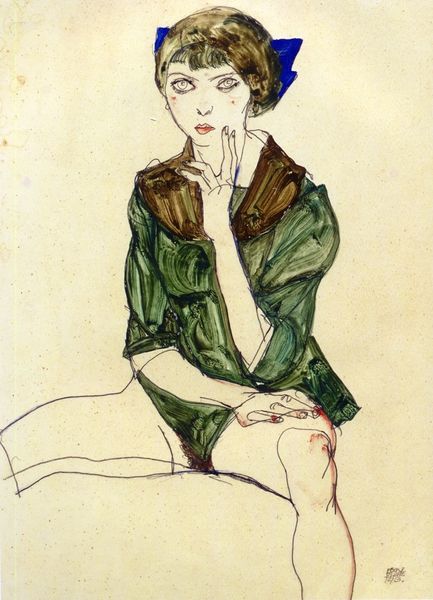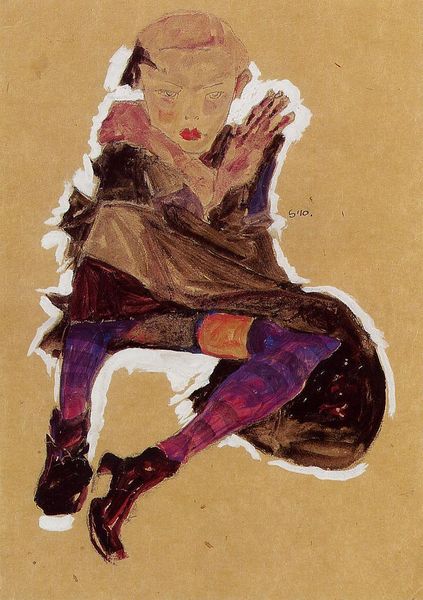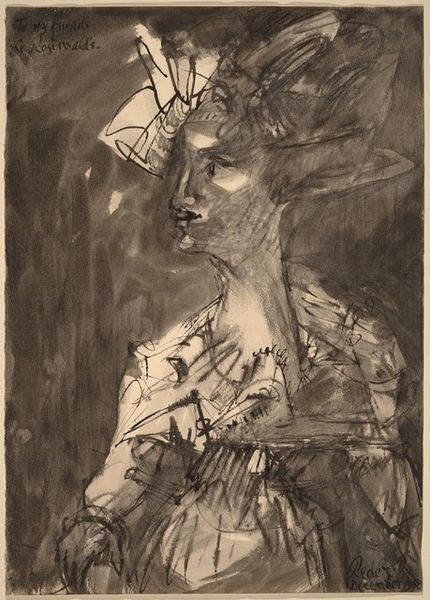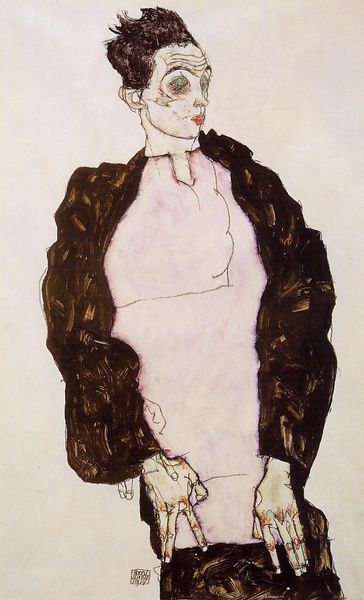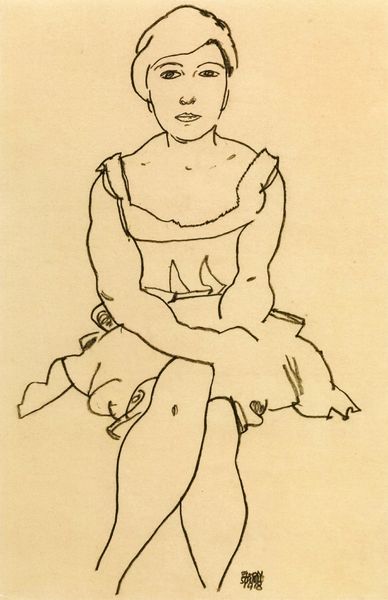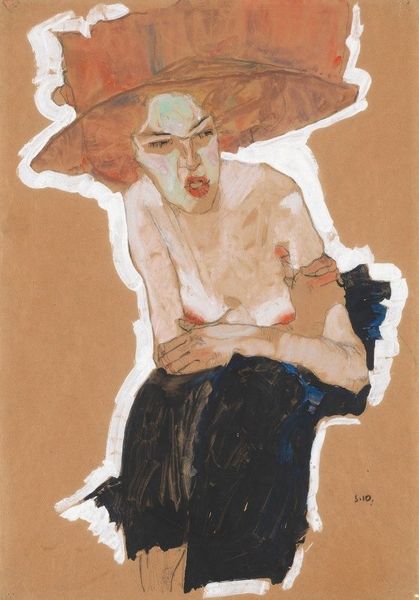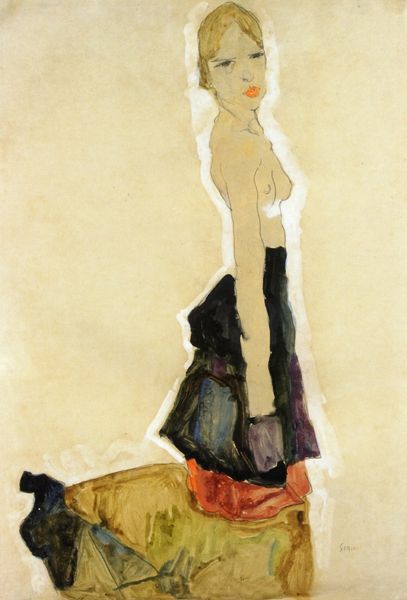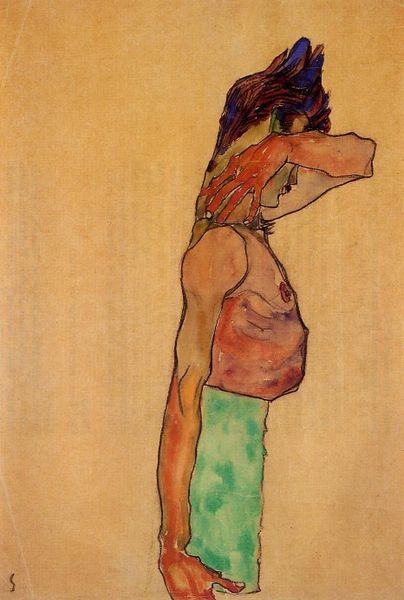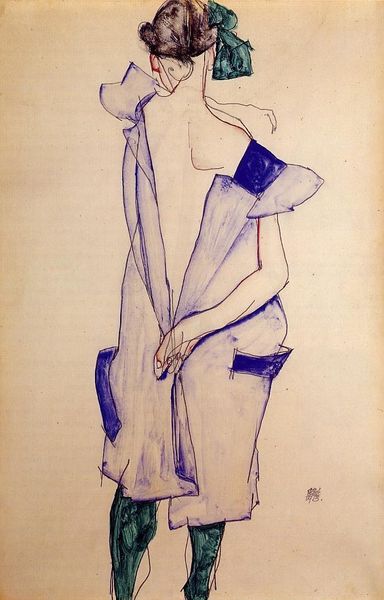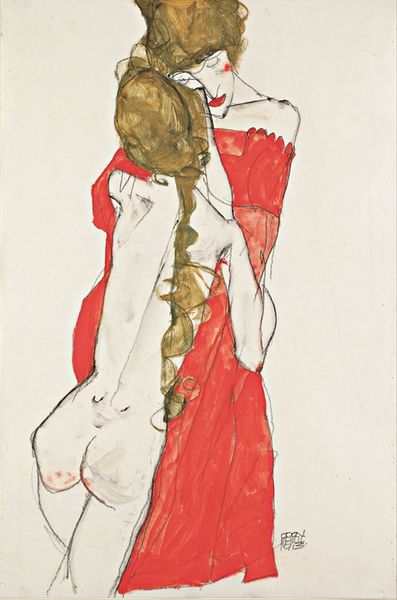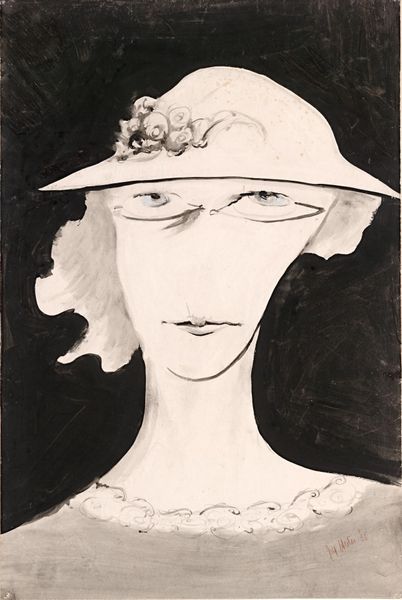
painting, paper, watercolor
#
portrait
#
art-nouveau
#
vienna-secession
#
painting
#
figuration
#
paper
#
watercolor
#
expressionism
#
female-portraits
Dimensions: 44.45 x 31.12 cm
Copyright: Public domain
Editor: So, this is Egon Schiele's 1910 watercolor and pencil on paper, "Portrait of Madame Dr. Horak". I'm struck by the unsettling directness of her gaze, and the way her body is sort of twisted, like she is caught between movement and stillness. How do you interpret this work? Curator: I see this portrait as Schiele challenging the conventional portrayals of women at the time. Consider Vienna in 1910. The Vienna Secession movement was grappling with ideas of modernity and identity. What does Madame Horak's somewhat androgynous presentation, her almost confrontational gaze, say about shifting gender roles and expectations? Editor: Androgynous? I suppose her large hat obscures some of the more traditionally feminine details we might expect. Is the intention to question her gender? Curator: Not necessarily to question her gender outright, but rather to explore the performativity of it. Think about the artistic circles Schiele moved in, influenced by thinkers like Otto Weininger. They were dissecting notions of masculinity and femininity. Schiele’s portrait invites us to consider how identity, especially female identity, was being both constructed and constrained by social norms. Notice the somewhat awkward rendering of her hands; could this indicate a struggle against these constraints? Editor: I hadn't considered the awkwardness of the hands, but now that you mention it, they do seem out of place, even somewhat vulnerable. Is this an intentional subversion, or perhaps a limitation in his technique? Curator: I would argue that, even if unintentional, it becomes part of the subversive nature of the portrait. The supposed imperfections highlight a raw, unidealized vision of womanhood, disrupting the polished facades that were typically favored in portraiture of the time. Perhaps that raw vision is not a limitation but his strength, allowing him to express both the psychological tensions of the individual and a broader critique of society. Editor: That is very insightful. So much to consider beyond just the visual aspects of the work! I’ll never look at another Schiele portrait the same way again. Curator: Indeed! It's about looking beneath the surface to understand the dialogues that art has with the culture from which it emerges.
Comments
No comments
Be the first to comment and join the conversation on the ultimate creative platform.
